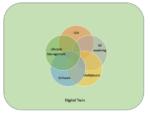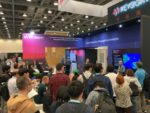We all know chip design is changing in substantial ways and at a fast pace. The demands being placed on semiconductor systems are growing dramatically, and the innovation being delivered to address those demands is just as dramatic. Everyone seems to have an opinion on these trends, and a set of predications to make sense out of it all. A recent Executive Insight on this topic caught my eye. The company publishing the piece is at the epicenter of many relevant trends. And the author is someone I know has been on the front line of change for many years. This is a must-read piece. Before I provide a link, I’ll whet your appetite a bit about how Altair’s Jim Cantele predicts the future of chip design.
The Company
Altair is a broad-based technology company that sits at the crossroads of many of the relevant trends that are changing the world around us. The company delivers comprehensive, open-architecture solutions for data analytics & AI, computer-aided engineering, and high-performance computing.
Its key goals include enablement of design and optimization for high performance, innovative, and sustainable products and processes against the backdrop of a highly connected world.
If we focus on chip design, Altair semiconductor design solutions are built to optimize EDA environments and to improve the design-to-manufacturing process, eliminate design iterations, and reduce time-to-market. The company provides tools that address the challenges of ever-increasing performance requirements and product complexity from chips to PCBs, and embedded systems, all the way to product realization.
You can learn more about Altair’s pedigree in this area here.
The Author
Jim Cantele wrote the piece. He is the Global SVP of Sales and Technology at Altair. Once upon a time, I worked with Jim at a small DFM startup. We were breaking new ground there, and Jim has been doing that his whole career.
Jim has seen the demands of innovation up close at large enterprises such as Mentor Graphics and Cadence Design Systems. He also pushed the envelope at high-profile startups such as One Spin Solutions, Celestry, and Runtime Design Automation, which was acquired by Altair six years ago.
Jim has seen a lot and his opinions on the future of chip design are worth listening to.
The Predictions
The Executive Insight discusses five semiconductor design trends. Taken together, they tell a compelling story. You need to hear Jim’s views directly, but here is a summary of the trends discussed.
#1: Reaching for the Sky: When you run out of room in two dimensions, you move up. Architects have known that for years, and the concept is quite relevant for chip design. But things aren’t as simple as they seem with an approach like this.
#2: Bringing Design In-House: Many factors conspired to create the chip shortage we are all too familiar with today. One impact of this situation was bringing chip design in-house to control your own destiny. This trend created many challenges, and companies still struggle to make the ideas of in-house design work today.
#3: Designing in the Cloud: Cloud computing is clearly here to stay. But using the vast resources available for efficient and cost-effective chip design isn’t as easy as it seems.
#4: Artificial Intelligence and Machine Learning: AI and ML are everywhere. This is clear. The compute and memory demands of these technologies puts a huge strain on chip design. What have we learned from AI and ML that can be applied to solve these design problems?
#5: Technology Convergence: The blurring of lines between different computing approaches and different architectures presents both a huge opportunity and a substantial challenge for chip design. How will this all come together? And are the solutions already here?
To Learn More
I encourage you to read the Altair Executive Insight. It will help to make sense out of a rapidly changing world. You can check out the piece here to learn how Altair’s Jim Cantele predicts the future of chip design.







